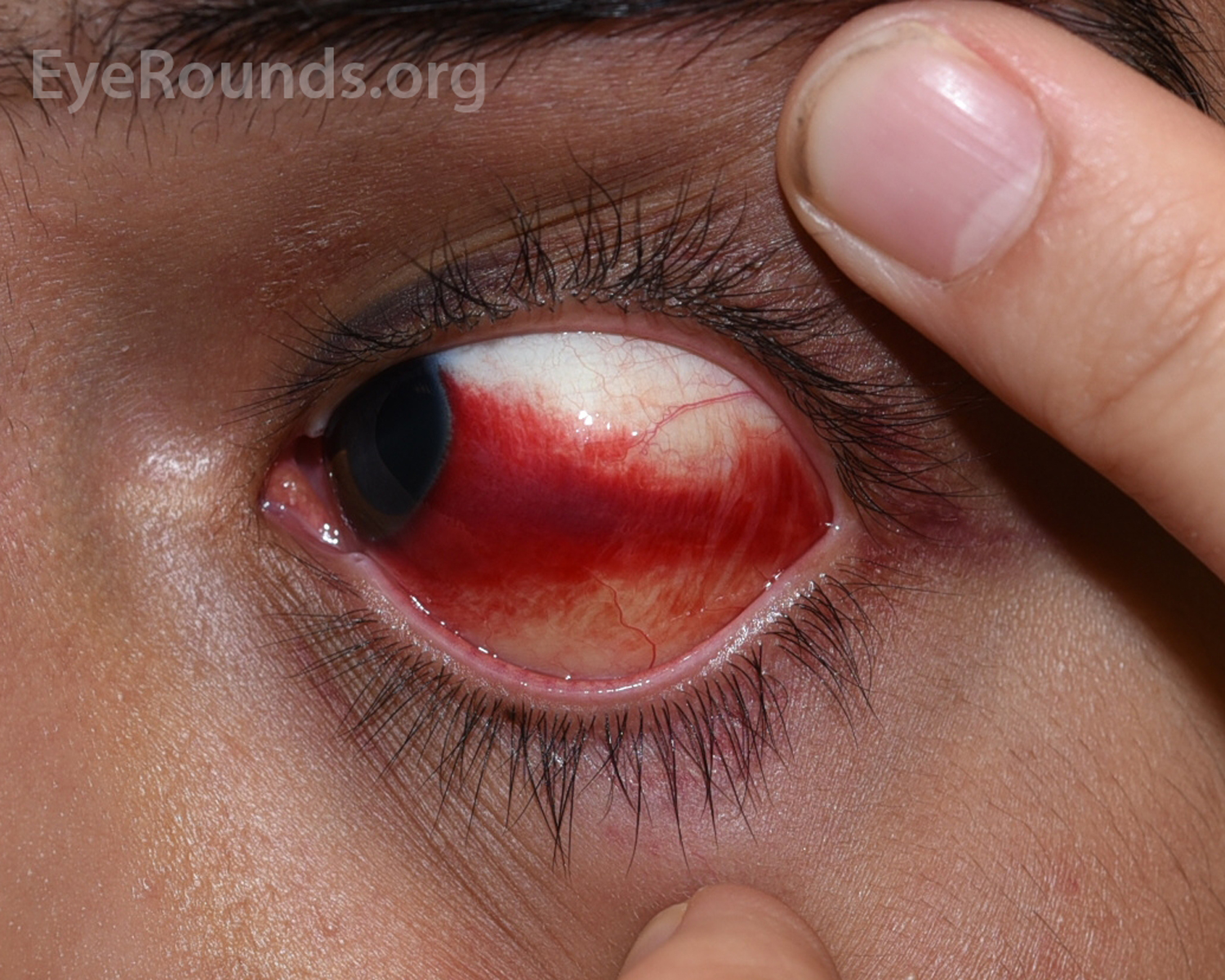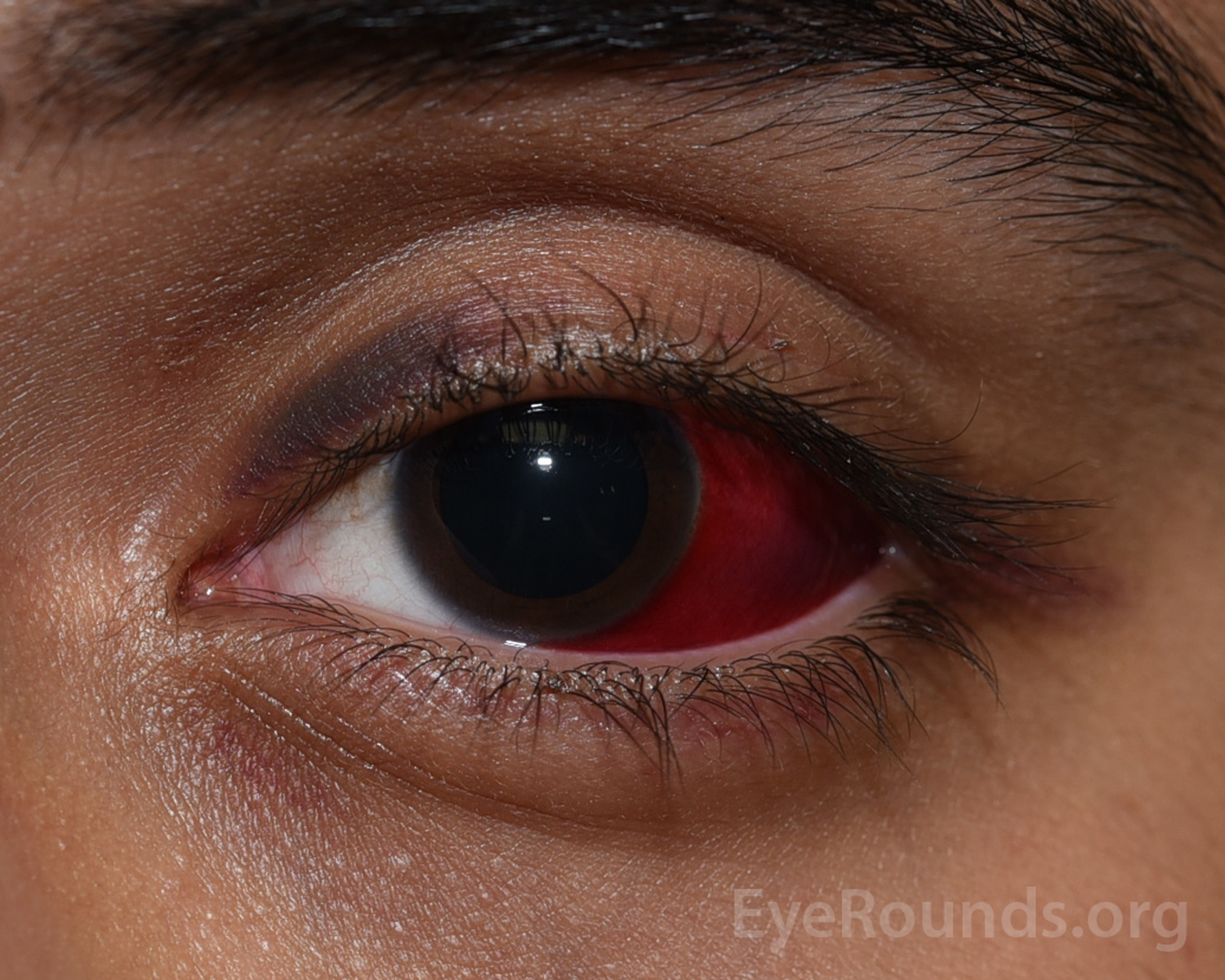
A subconjunctival hemorrhage occurs due to ruptured blood vessels in the conjunctiva. The blood accumulates between the sclera and the conjunctiva and appears as a red spot on the white of the eye. The bleeding can be caused by trauma, hypertension, elevated venous pressure (e.g., Valsalva maneuver, coughing, vomiting), anticoagulant therapy, and acute hemorrhagic conjunctivitis [1]. The most common risk factors in younger patients are trauma and contact lens usage [2]. The major risk factor in elderly patients is systemic vascular disease, which weakens the walls of blood vessels [2]. Subconjunctival hemorrhages are typically benign and resolve on their own.


Subconjunctival hemorrhages, also known as hyposphagma, occur when there is bleeding into the potential space between the conjunctiva and sclera. This can occur secondary to any activity resulting in a Valsalva maneuver (coughing, sneezing, straining, vomiting), after ocular surgery or trauma, as a result of certain types of viral conjunctivitis, or spontaneously. Individuals on anticoagulation, those with systemic vascular disease (hypertension, diabetes, arteriosclerosis), and those with systemic conditions causing decreased coagulability are more prone to developing this condition. It is typically asymptomatic and resolves spontaneously.
Patient sustained blunt trauma to the head. Echymosis is evident in the lid and around the eye. Medially, there is a small subconjunctival hemorrhage. In the absence of fracture or any ocular damage (which would require additional treatment), the subconjunctival hemorrhage should resolve on its own within a matter of weeks.

Ophthalmic Atlas Images by EyeRounds.org, The University of Iowa are licensed under a Creative Commons Attribution-NonCommercial-NoDerivs 3.0 Unported License.